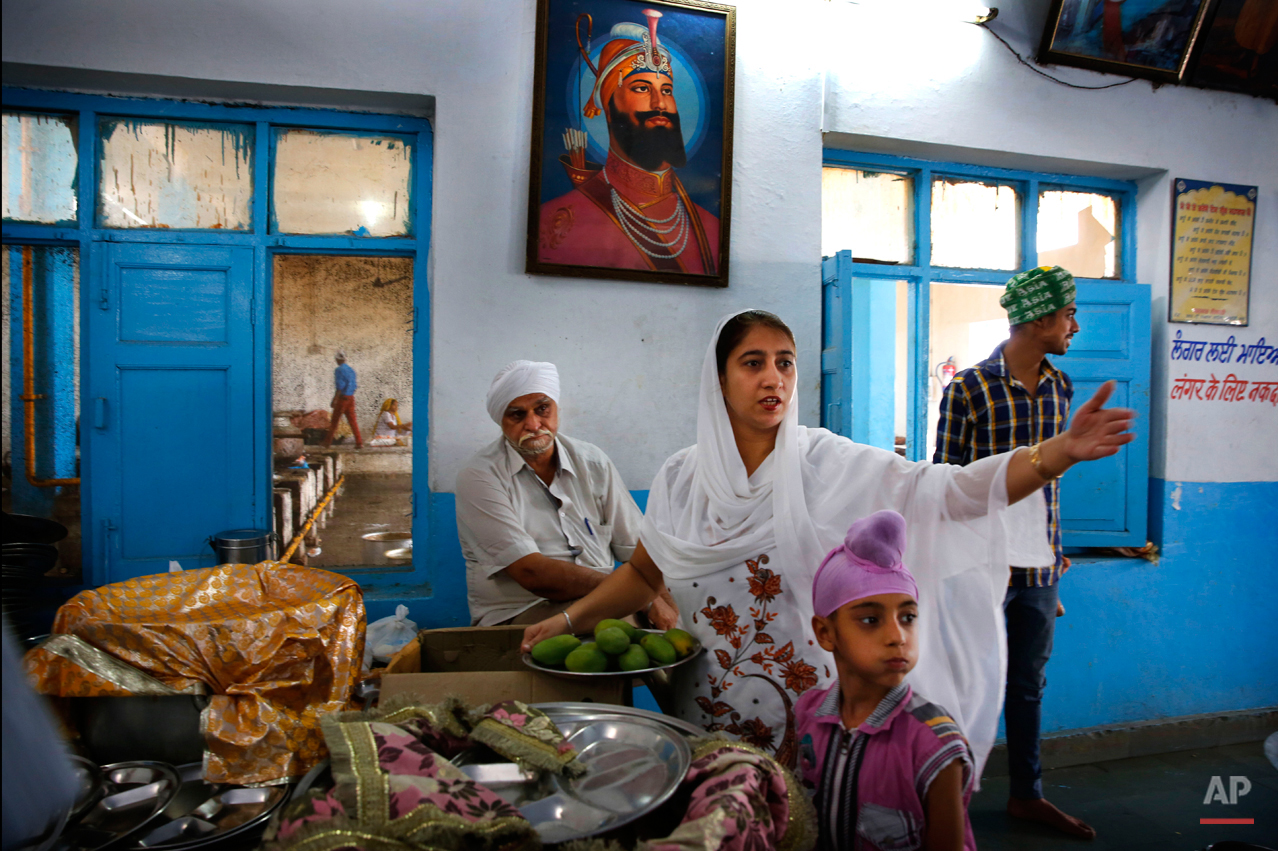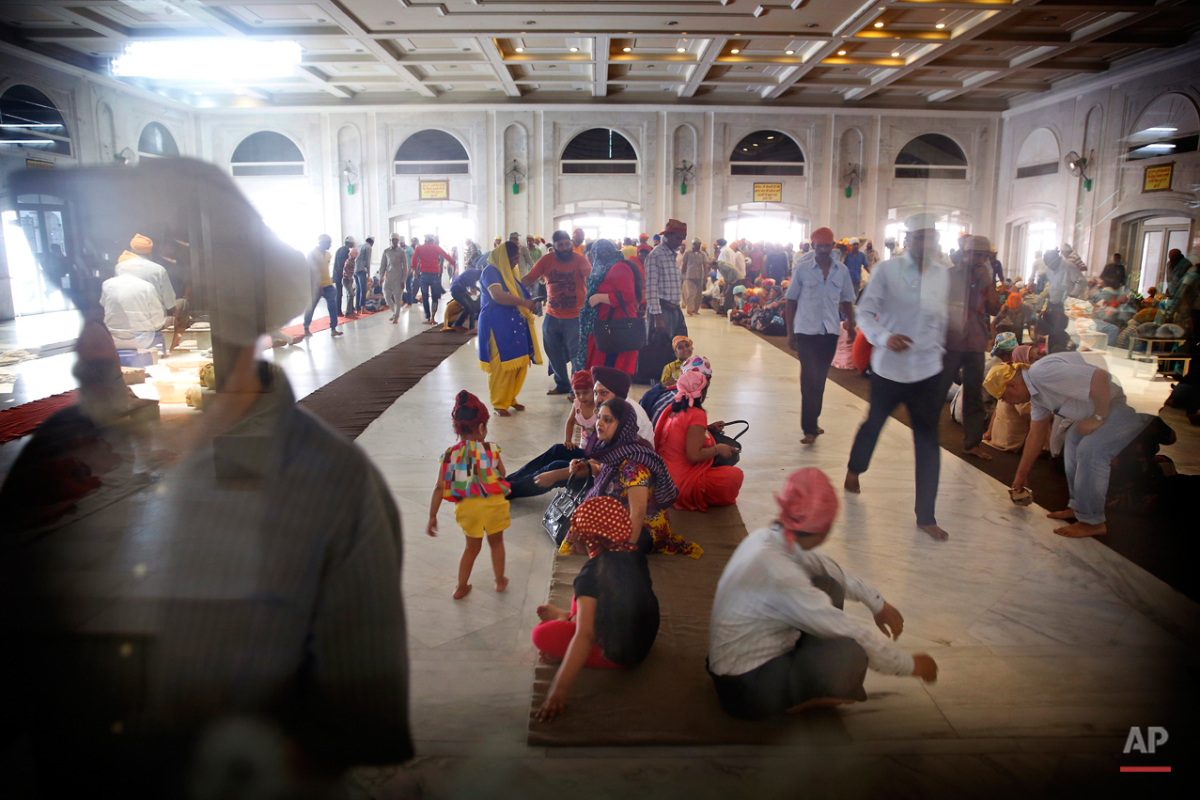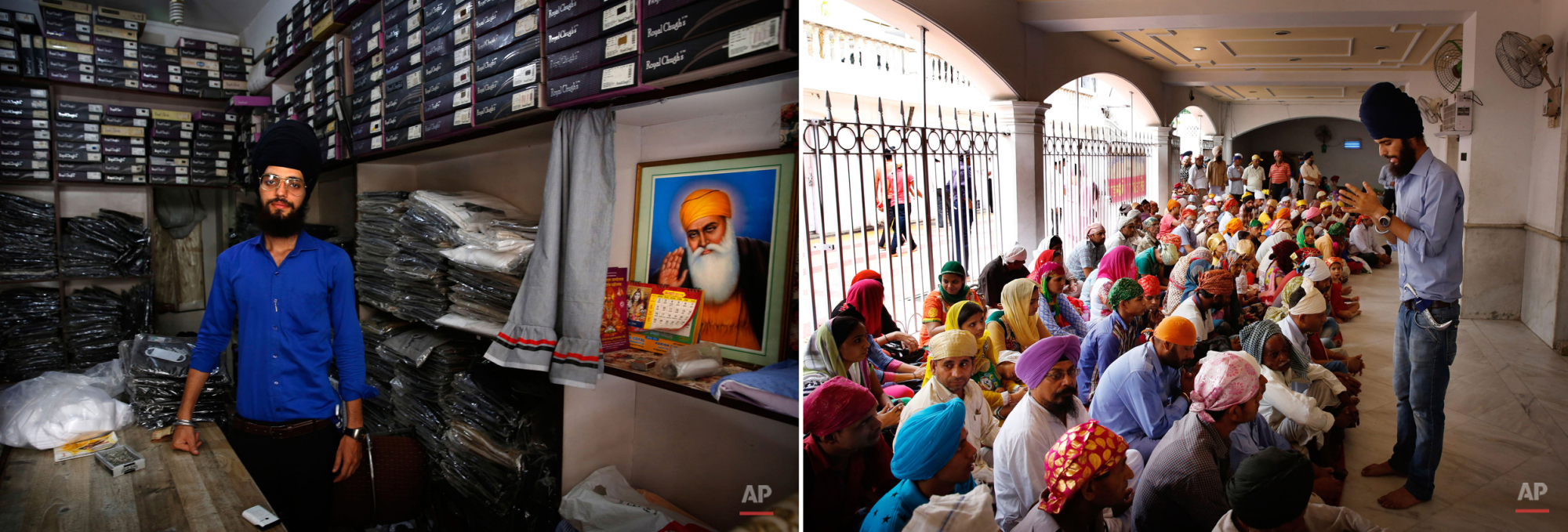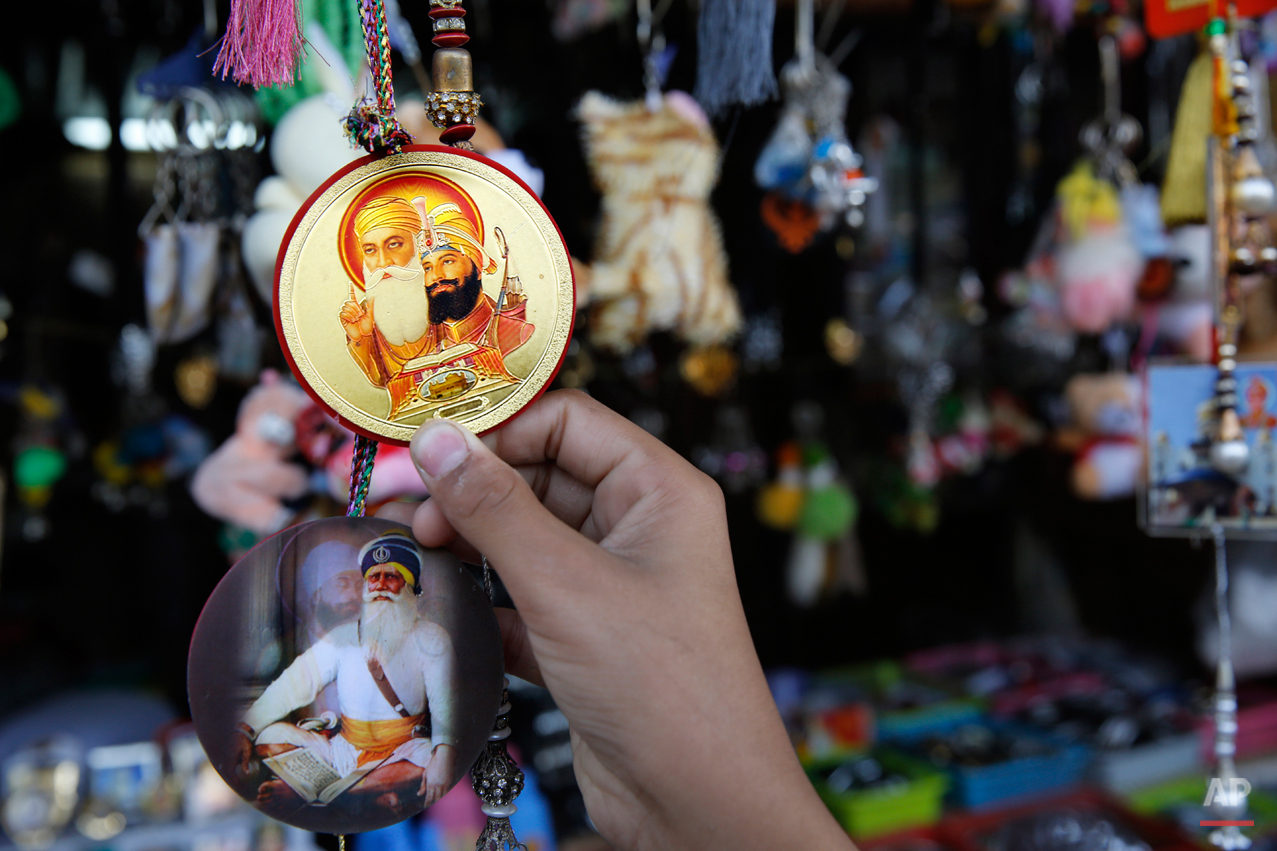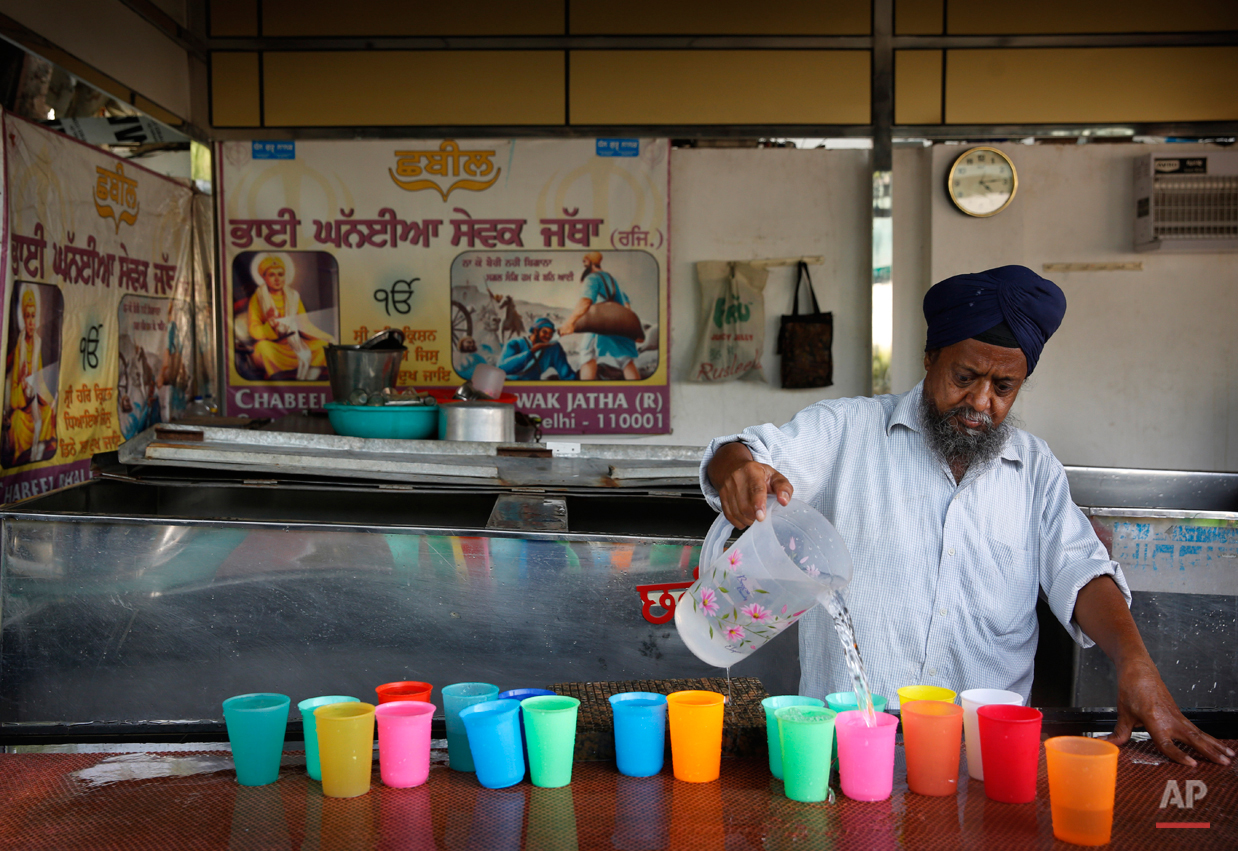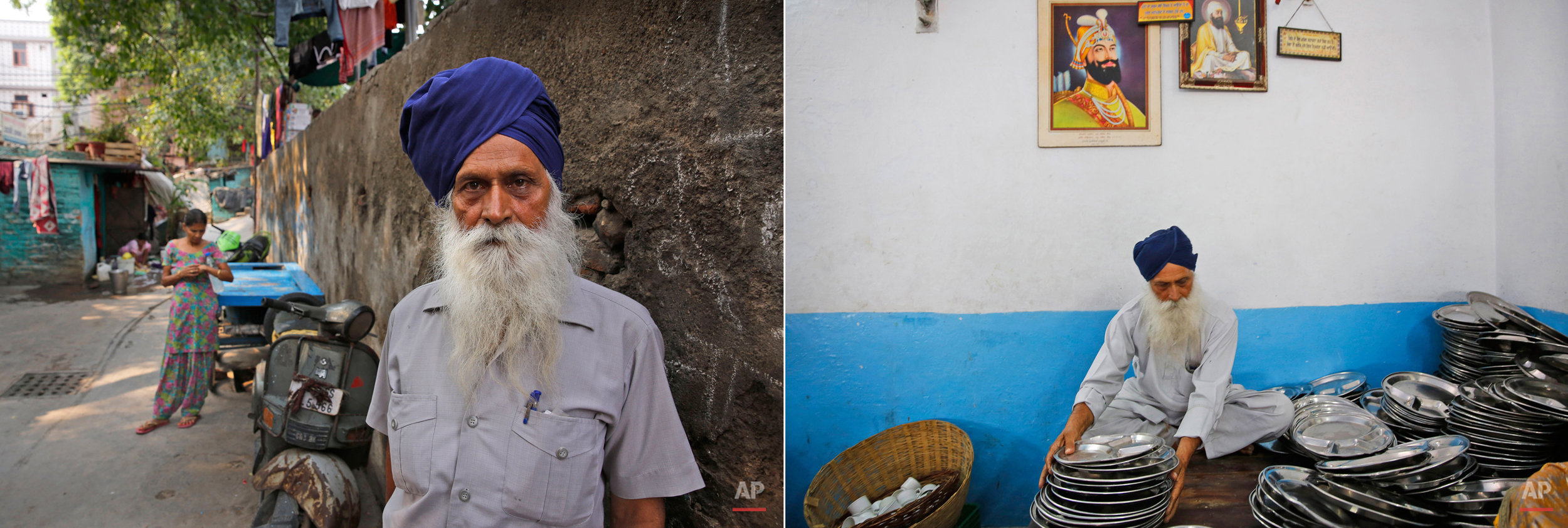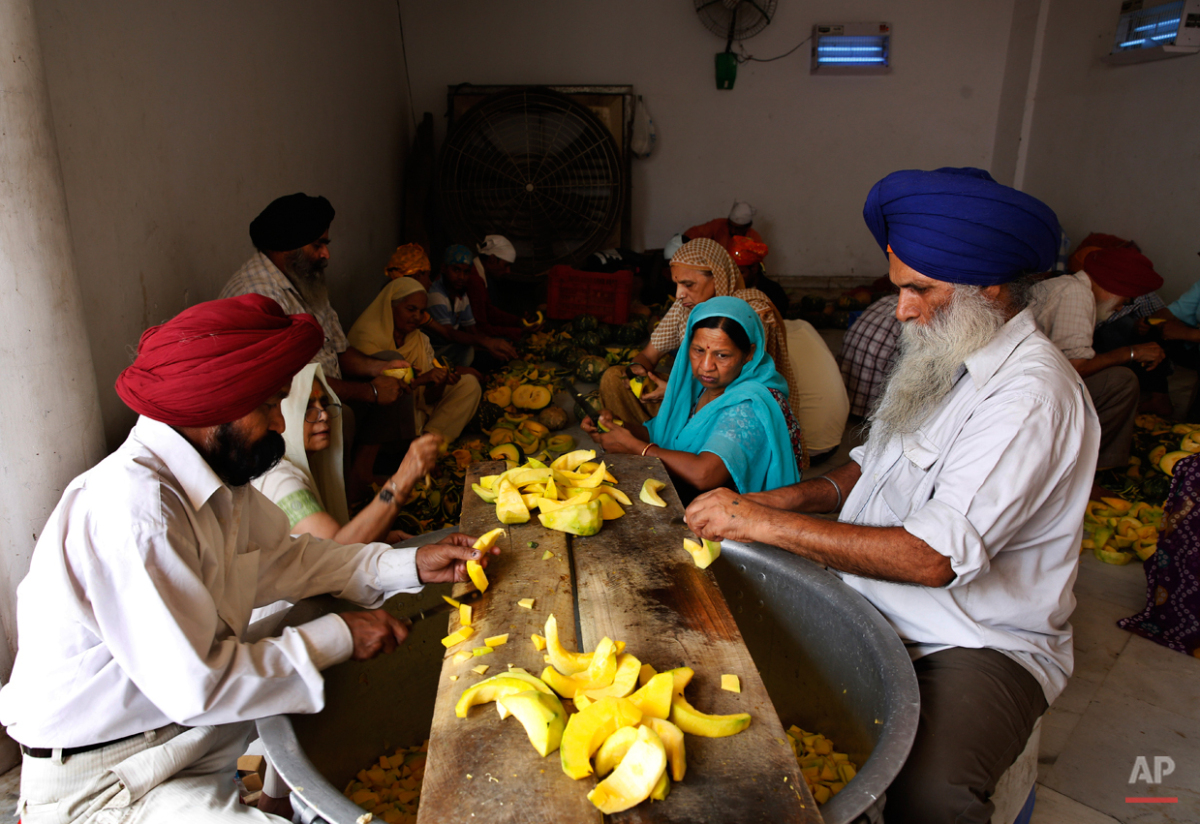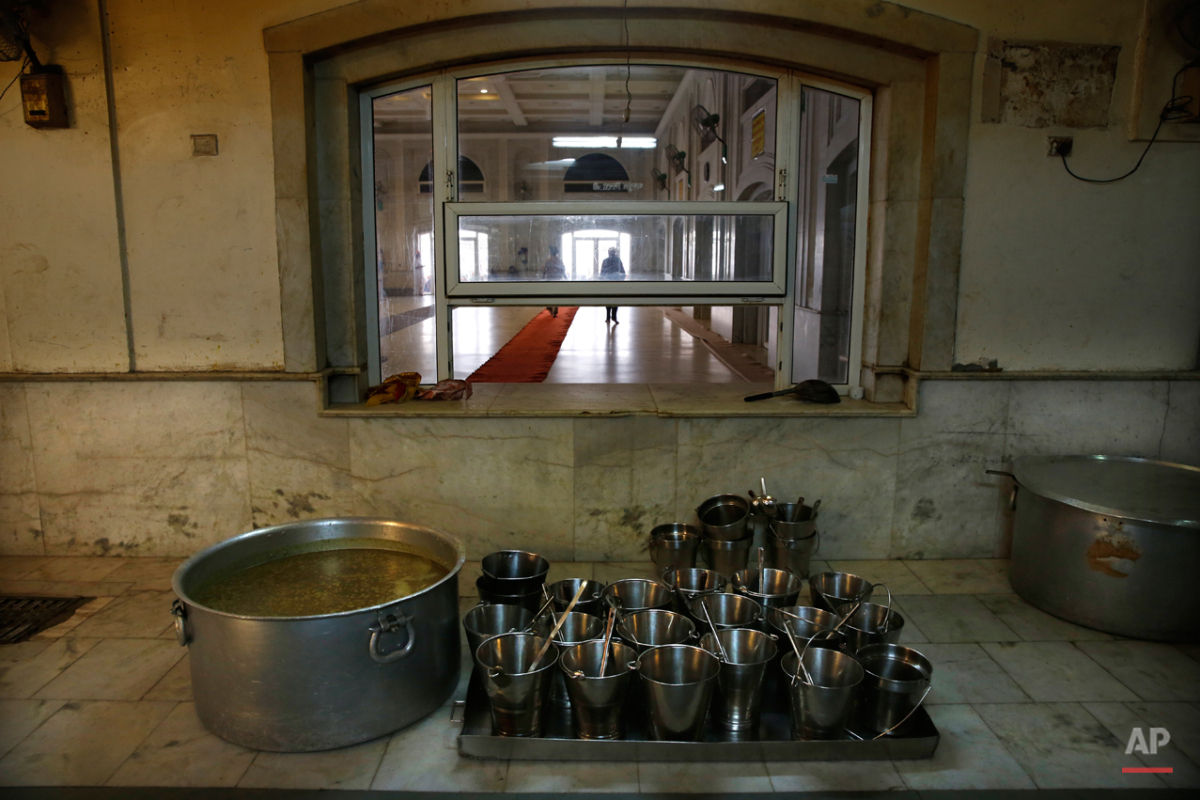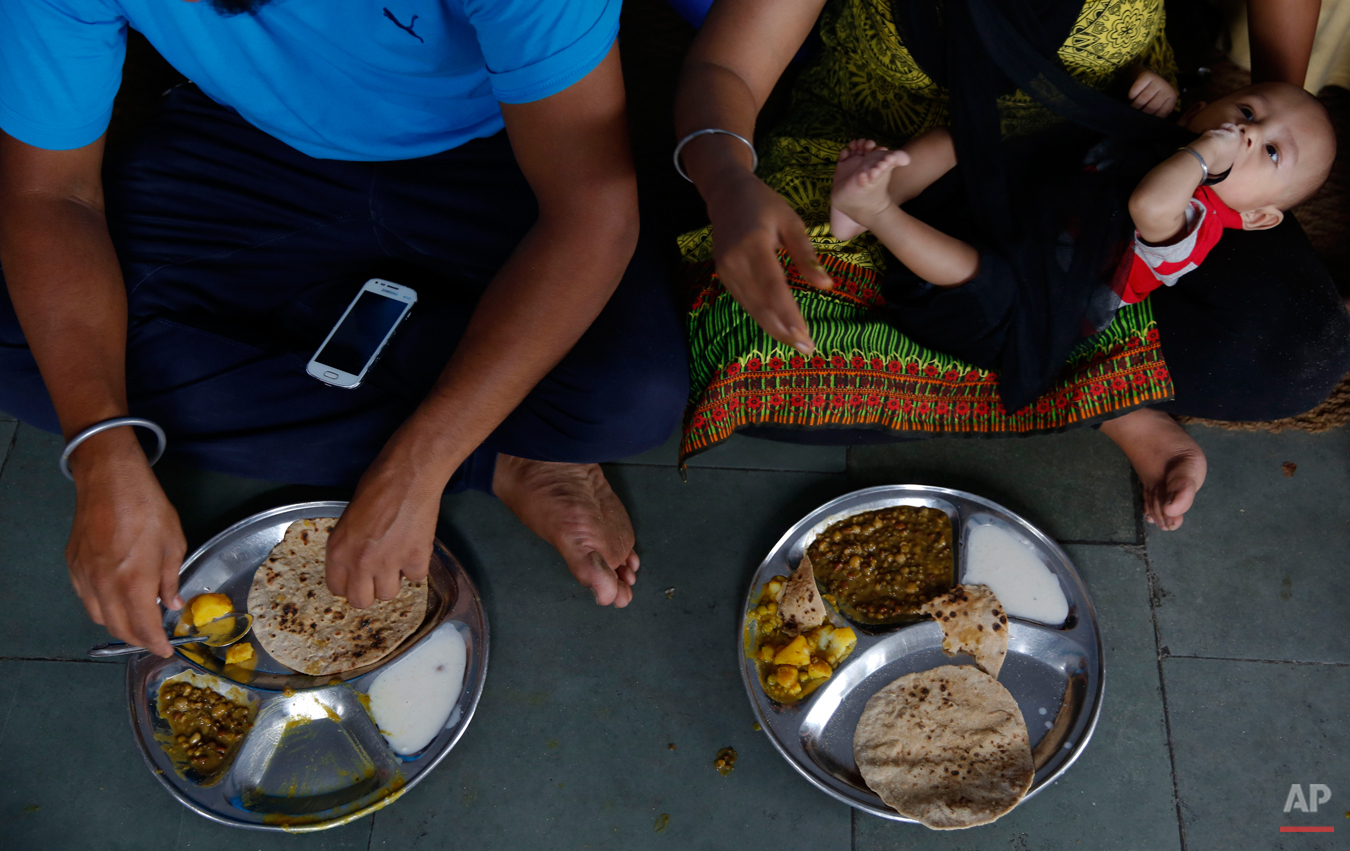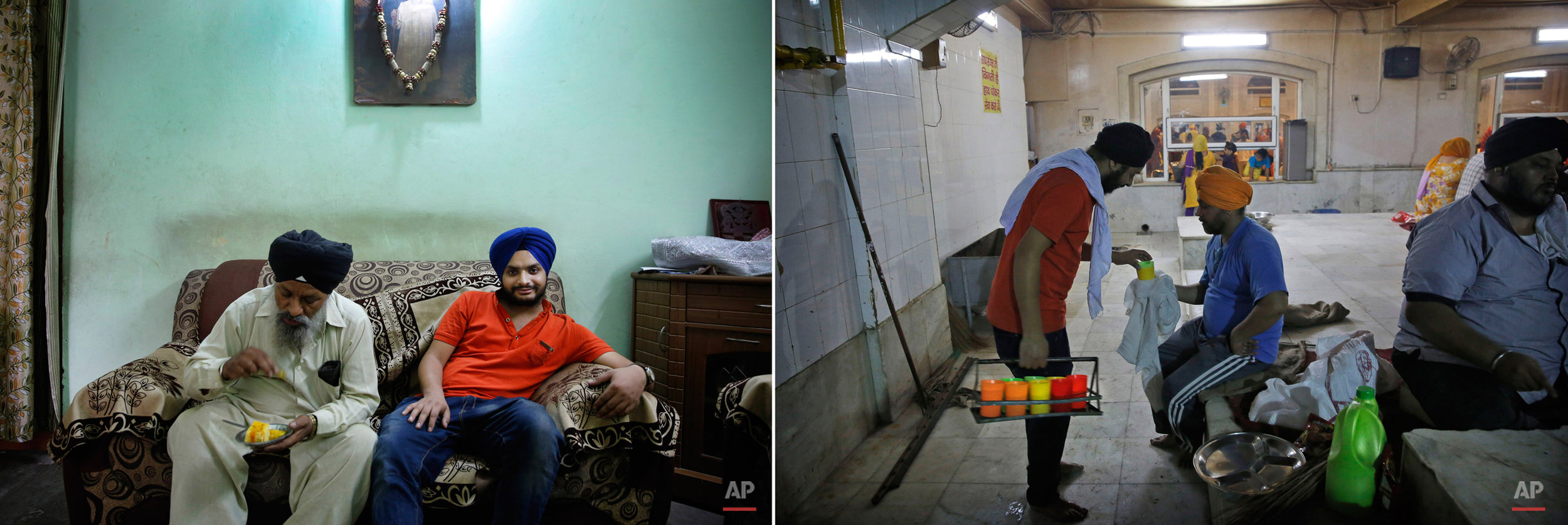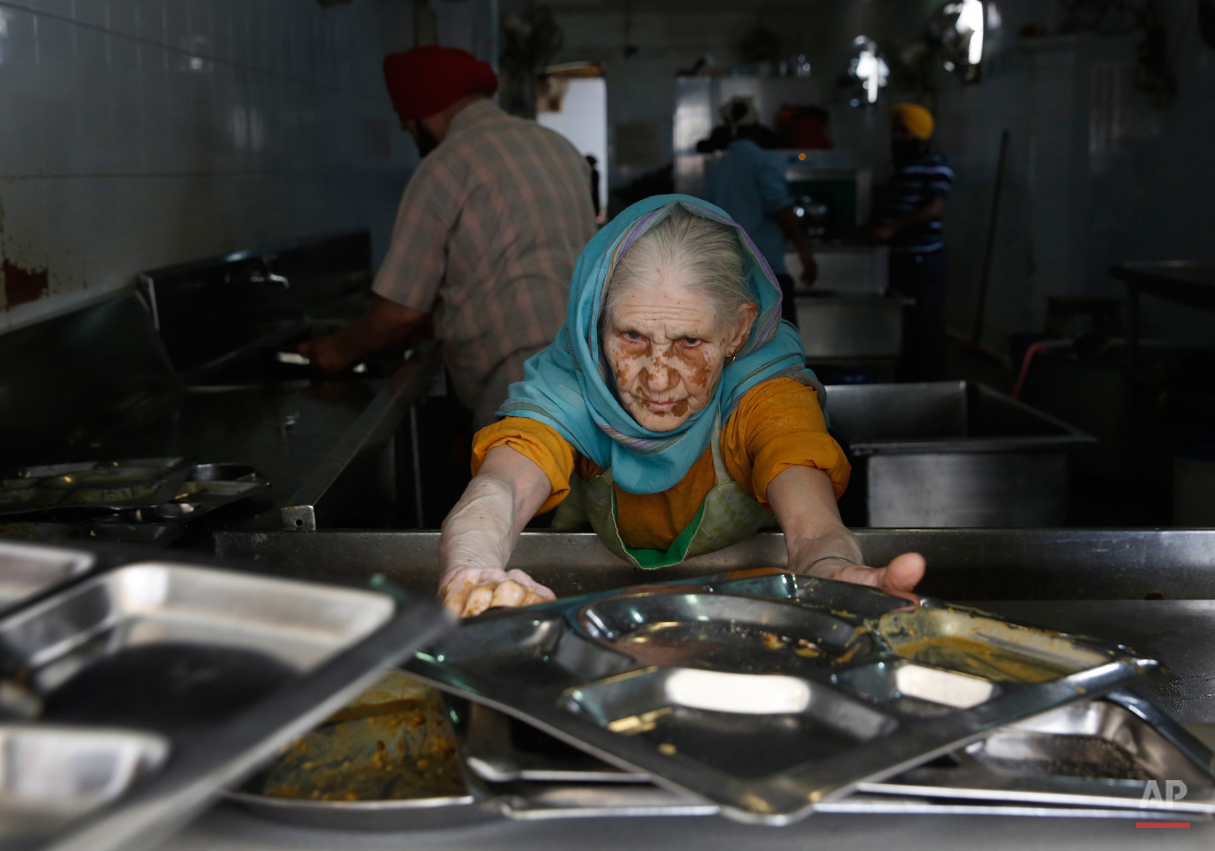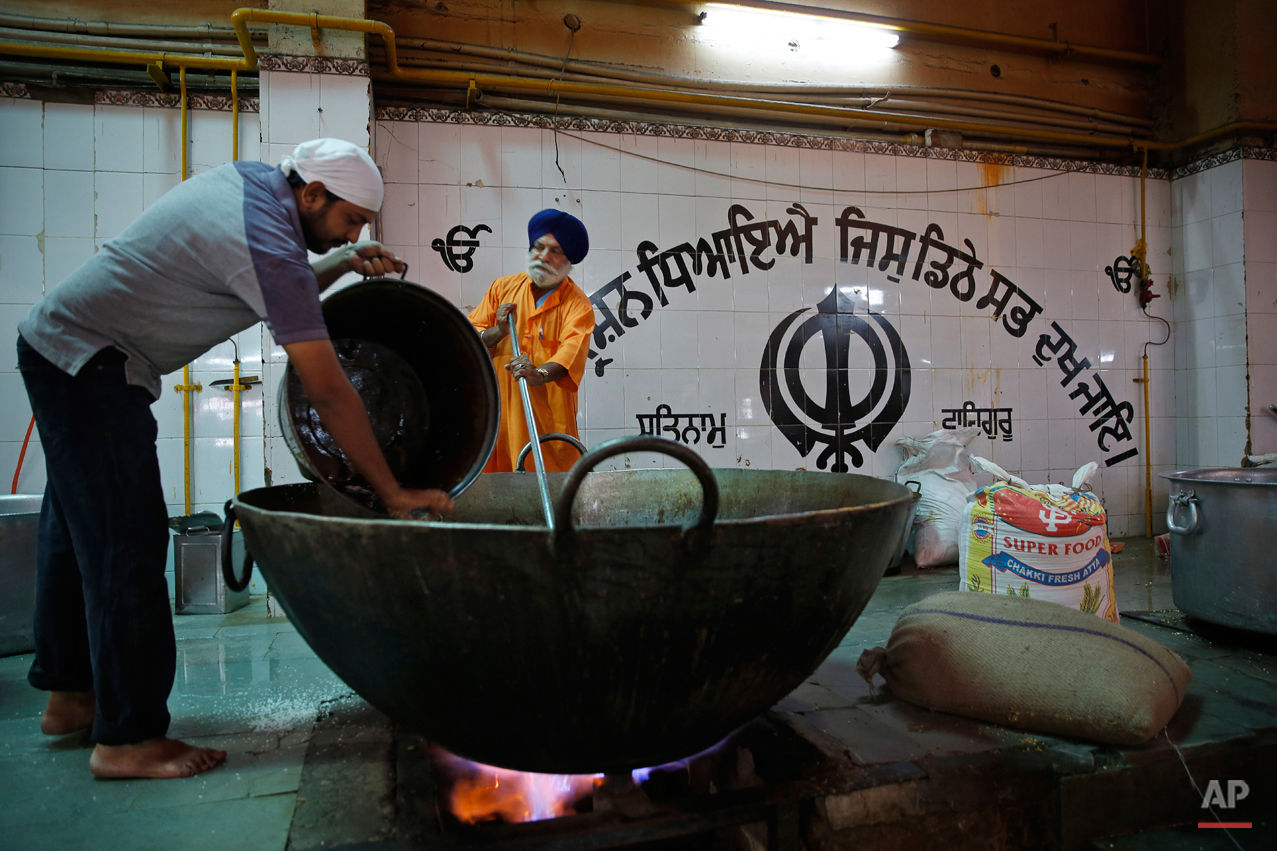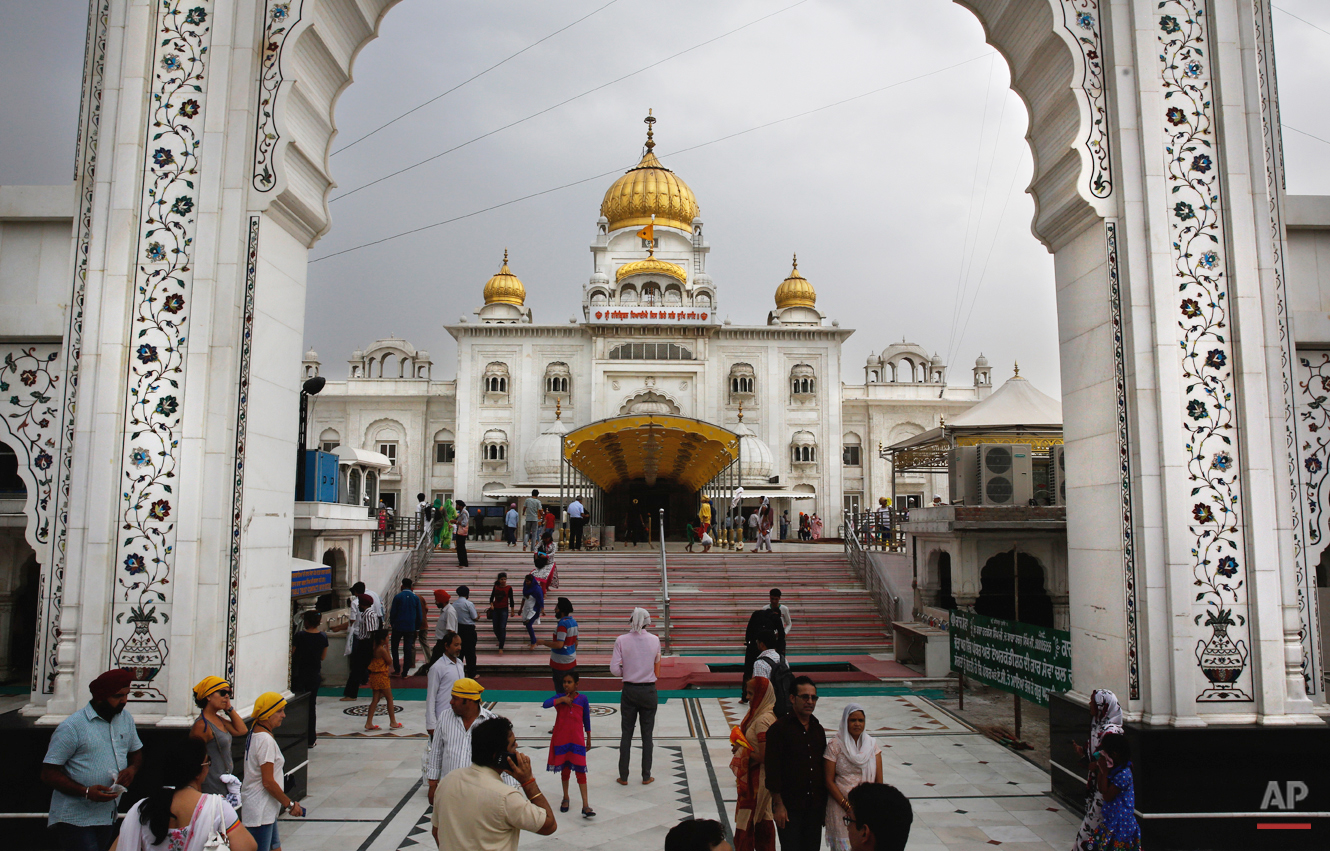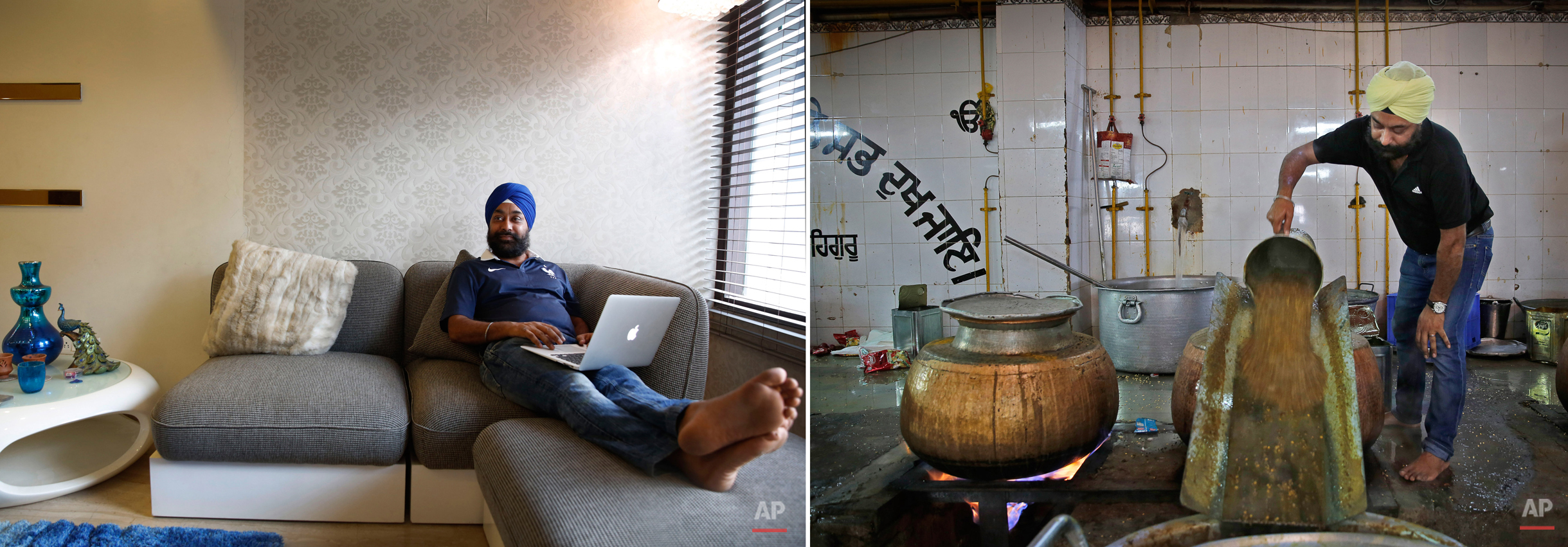India's religious kitchen

Harjeet Singh can usually be found riding around New Delhi on his Harley Davidson Superlow, or helping foreign companies set up operations in India. At home, the businessman has staff to clean and cook for his family. But at the gurdwara where he worships alongside other Sikhs, he sweeps the floor, cleans dirty dishes and helps prepare meals for thousands not as fortunate as him.
He cites Sikh scriptures: "a tenth of your income and time should be dedicated to serving people." Working in the gurdwara twice a week also helps him purge his ego, he says.
Service is one of the most integral traditions of gurdwaras. From cleaning to preparing tons of food every day there is plenty of work to be done. And there are plenty of sevadaars, or volunteers, to do it.
Each day people from all walks of life pour in to assist. Others come for a free meal.
The langar, which translates to community dinner, begins at noon in a large, high-ceilinged hall at the Bangla Sahib Gurdwara in New Delhi. Several rows of carpets are quickly occupied by people who swarm in and sit down to be served.
They are from all religions, and reflect the spectrum of life in this crowded city. Some are desperately poor. Some work in nearby offices. Some simply like the food.
More than a thousand dishes are laid out on the floor, and volunteers with buckets of lentils and Indian flat bread crouch over to fill the plates. The meal, which runs into the evening, feeds more than 10,000 people every day. On Sundays, the number doubles.
Legend has it that a teenage Guru Nanak, who founded Sikhism in late 15th century, was given some money by his father and asked to turn a profit. But when Nanak went into town he saw a group of hungry men and used the money to buy groceries and asked them to cook it together and eat.
While this made his father very angry, it is now a tradition followed by more than 30 million Sikhs worldwide. Nearly every gurdwara in the world, irrespective of size, has a kitchen and serves a langar.
Men, women and children throng the kitchen at Bangla Sahib, one of the biggest gurdwaras in India, brewing soupy dishes in gigantic metal pots, rolling mounds of dough and flipping breads on mesh-topped stoves.
While the gurdwara employs a small group of men to help manage the kitchen, it depends on visiting worshippers to contribute nearly half of all work and food supplies. In addition to what is brought in as donations, the gurdwara spends more than $2,000 a day on the meal, according to the management committee at Bangla Sahib. Sacks of rice, flour, and lentils are stacked from floor to ceiling in the storage room. The langar must go on every day.
"It is not just an eating joint," said Kanwer Deep Singh, the 47-year-old information officer of the gurdwara. The langar, he said, is a means of bringing a diverse community together irrespective of social status and religious beliefs.
"In this turn you may be serving, and the next turn you may be sitting down to eat," he added.
Follow Manish Swarup | Twitter | Instagram
Text from the AP news story, Free meal for thousands in New Delhi example of Sikh service, by Rishabh R. Jain.
Spotlight is the blog of AP Images, the world’s largest collection of historical and contemporary photos. AP Images provides instant access to AP’s iconic photos and adds new content every minute of every day from every corner of the world, making it an essential source of photos and graphics for professional image buyers and commercial customers. Whether your needs are for editorial, commercial, or personal use, AP Images has the content and the expert sales team to fulfill your image requirements. Visit apimages.com to learn more.
Written content on this site is not created by the editorial department of AP, unless otherwise noted.
AP Images on Twitter | AP Images on Facebook | AP Images on Instagram
Visual artist and Digital Storyteller at The Associated Press

